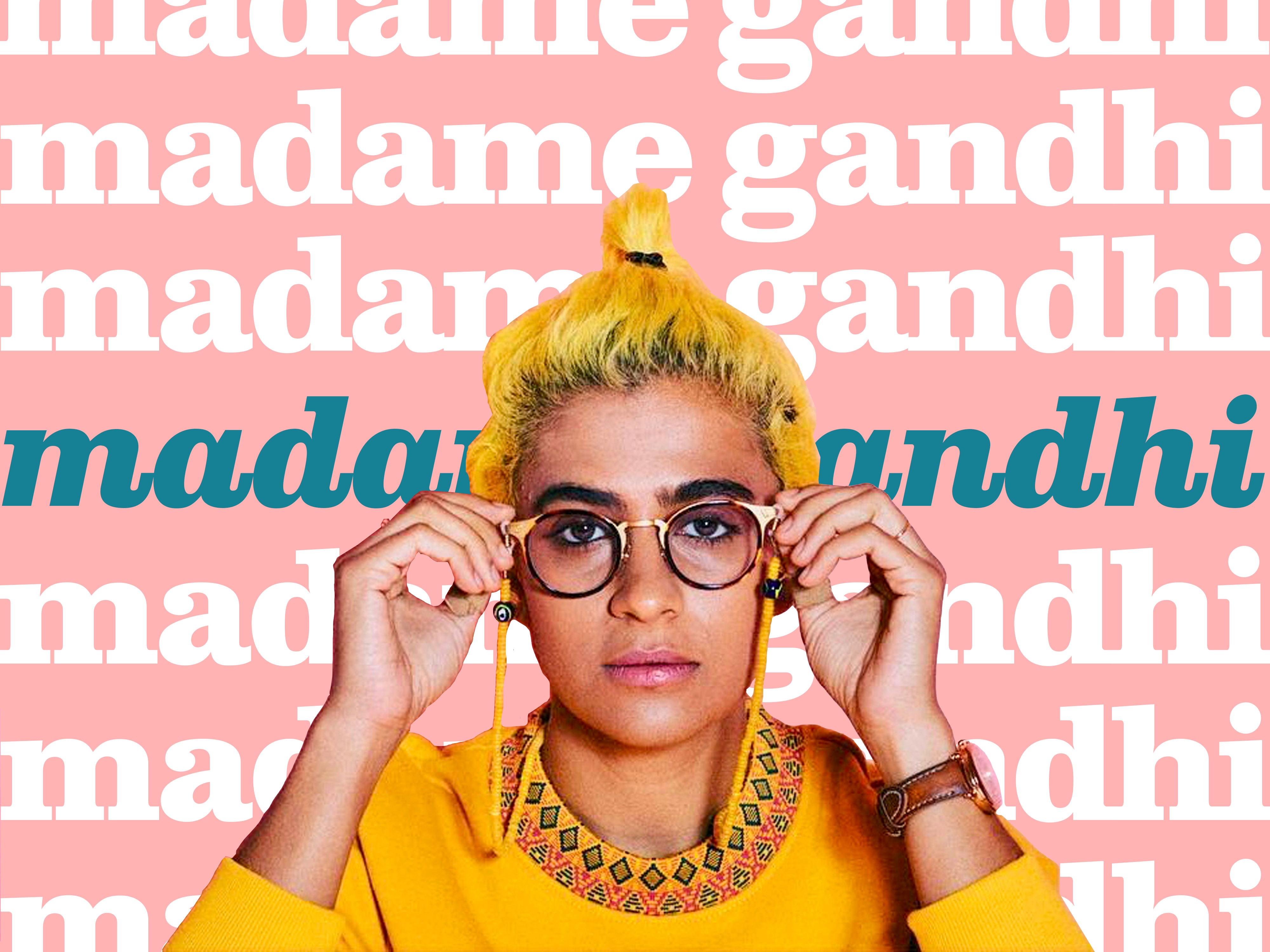A yellow Prius pulls into the CCRMA (Center for Computer Research in Music and Acoustics) parking lot. Out steps Kiran Gandhi M.A. ’22, known by her stage name “Madame Gandhi,” dressed in a bright yellow suit with a floral shirt underneath and neon sneakers. Even her AirPods case is yellow. She exudes joy and warmth as she greets me and photographer Aya Aziz ’25 with a big hug. Gandhi’s mission for her music is captured in her incredibly coherent aesthetic — to spread happiness and empower listeners. Graduating with a Masters in Music Science and Technology, she is using her scientific and technical knowledge to produce more positive and environmentally attentive music.
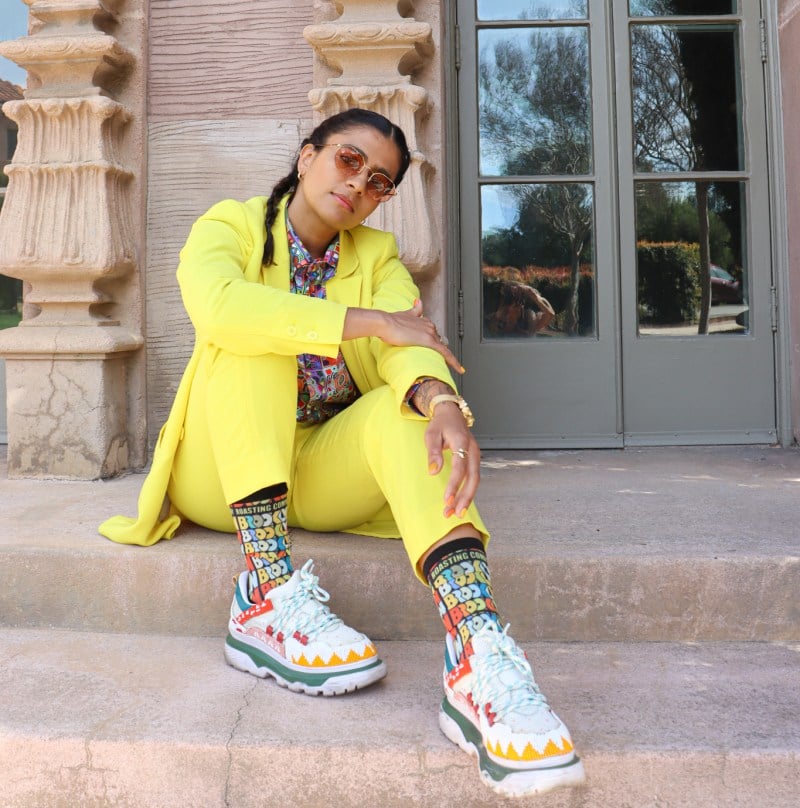
Before coming to Stanford, Gandhi toured as a drummer for M.I.A., Kehlani and Lizzo, all while also earning an MBA from Harvard.
After coming to speak at CCRMA in 2016, Gandhi fell in love with the program’s state-of-the-art facilities and jumped at the opportunity to do a Masters at Stanford. Gandhi emphasizes that, with cutting edge technology and a leading role in electronic music production, “CCRMA is the beginning of what then permeates the rest of the industry.”
In addition to her love for music, Gandhi is passionate about activism. She made headlines when she ran the London marathon while free-bleeding (menstruating without menstrual products) to advocate for the de-stigmatization of menstruation. She combines music with advocacy to deliver catchy and visually impactful messages. Her music video, “Waiting for Me,” which encouraged women to use their voices against systemic oppression, won the Music Video Jury Award at the SXSW Film Festival in 2021.
Gandhi is coming into her own as a musician after gaining experience drumming for other artists. She pushes for an approach to music production that more directly engages with the environment. In March, Gandhi took a trip to Antarctica to record sounds of animals underwater to use as samples for snare drums and synthesizers. She hopes to produce music using sounds that are organically sourced from the natural environment. “We have a conscious movement when it comes to food — whether we’re buying vegan or non-GMO or organic. Where’s that conversation when it comes to music, in the lyrics, in the source of the actual instruments?” she asks.
Gandhi’s Masters program advisor Chris Chafe wrote that Gandhi has “amplified the appreciation of bioacoustics at [CCRMA].” He explained Gandhi’s penchant for listening and finding the beauty of music in nature: “I had the good fortune to accompany Gandhi for a visit with hundreds of elephant seals at Año Nuevo State Park this winter. She is someone who gets quiet and tunes in deeply and, except for that, I think the rangers and I wouldn’t have heard the symphonic chorus that was before us.”
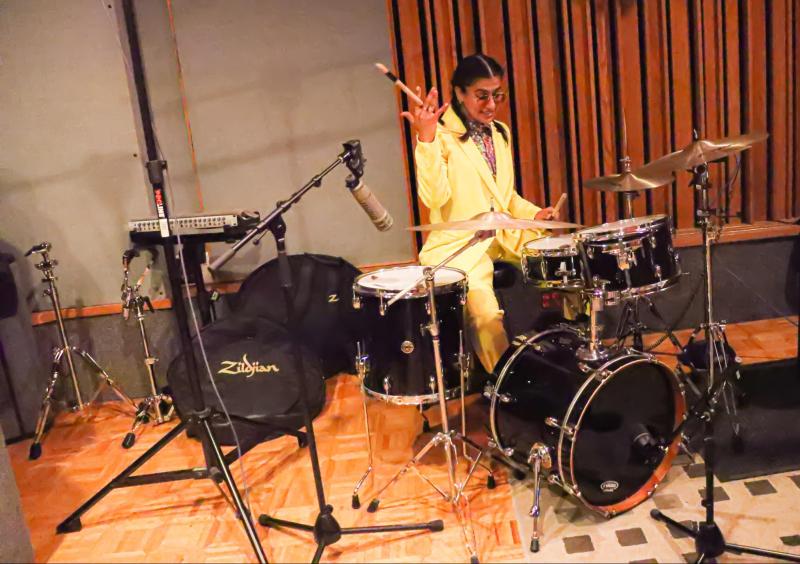
Ever since discovering her love of drums at a summer camp when she was 12 years old, Gandhi has placed the dynamic instrument at the heart of her music. Her approach to drums differs from most studios: Gandhi laments that much of the drum beats in music now are produced through “copying and pasting” previously sampled beats — sometimes, studios don’t even have live drum sets. For her, however, live drums are indispensable because they inject life into her music. “I think drums are a source of human expression. Drums are a heartbeat; drums have flavor and soul and an emotion,” she explains.
Gandhi is enthusiastic about live drums’ ability to unite people through joyful rhythm. “Our live shows are more alive because they’re so rhythm oriented. Everyone’s dancing the whole time,” she said.
For “Music, Computing, Design: The Art of Design” (MUSIC 256A), Gandhi created an immersive musical experience in a boxing gym by designing a video game which illuminated pieces of “playable” equipment. At each station, the sounds of punching, jump ropes or speed bags turned into percussive beats with the ability to be recorded and layered. In this boxing gym, players could hear the physical imprint that their bodies left on the world, transforming music into a corporeal experience.
“The whole concept of drumming or boxing, it’s just about freedom. It’s about expression. It’s about any person, of any gender, doing anything they want to,” Gandhi said.
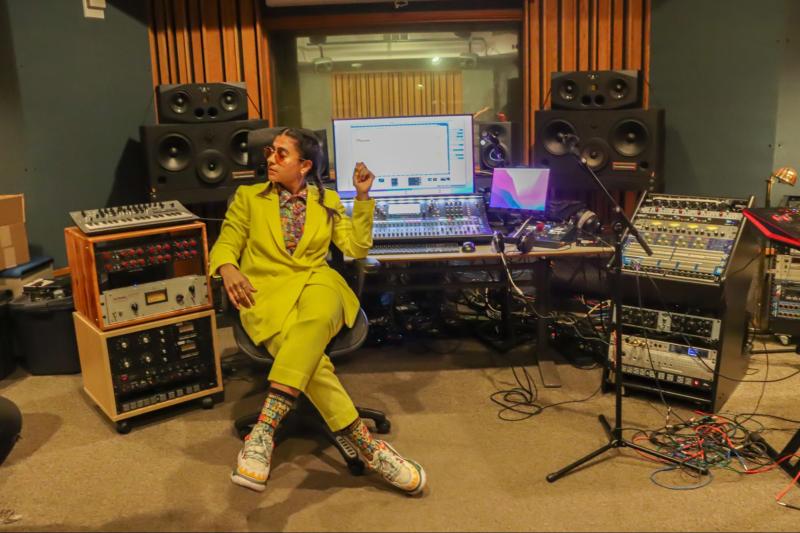
Being conscious of the impact her music has on the world and the ethics involved in its dissemination is especially important to Gandhi. She recognizes that she relies on streaming platforms for her music to reach a large audience, which implicates her in the complicated ethics surrounding big data. She takes classes at Stanford that educate her on the ways in which companies use data to exploit and marginalize disadvantaged groups.
Given Stanford’s privileged position in the tech industry, Gandhi pushes students to take charge by increasing awareness about the various ways that tech companies use data. “Unless the smart people who are the ones driving the whole thing forward are also the people keeping it in check, there’s no balance,” she warns.
In her coursework at Stanford, she is studying the neurological effects of music to write songs that generate positive emotions in her listeners. “I’m most interested in healing; I’m most interested in happiness; I’m most interested in positivity and people feeling uplifted through my musical choices as an artist. And so when I can understand scientifically which frequencies might enable that, which BPM (beats per minute), which speed of a song, which tones might inspire someone to feel good, that knowledge motivates me to then put those kinds of choices into my body of work,” she explains.
Assistant Professor of Music Patricia Alessandrini applauded Gandhi for her contributions to the CCRMA community. “Her compelling and engaging approach to music technology in performance and composition, including the creation and sharing of tools and resources for other artists, is an inspiration to the CCRMA community and the field as a whole,” Alessandrini wrote.
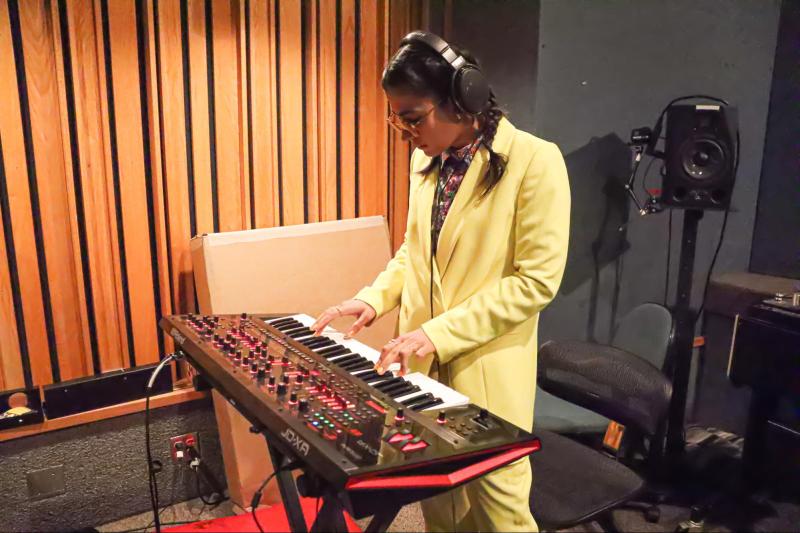
Gandhi will be releasing her new EP “Vibrations” in the upcoming fall, which will be a lot more vulnerable in the explorations of her relationship with her community and with herself. A visually attentive person, Gandhi uses the album’s aesthetics to reinforce her message: “In the past album artworks, the outfits that I wear are very buttoned up. This one we ended up just going completely skin to express that vulnerability and that openness and finding power in the openness. It’s very magical.”
Madame Gandhi will be performing at CCRMA on June 10 at 7 p.m.
Editor’s Note: This article is a review and includes subjective opinions, thoughts and critiques.
